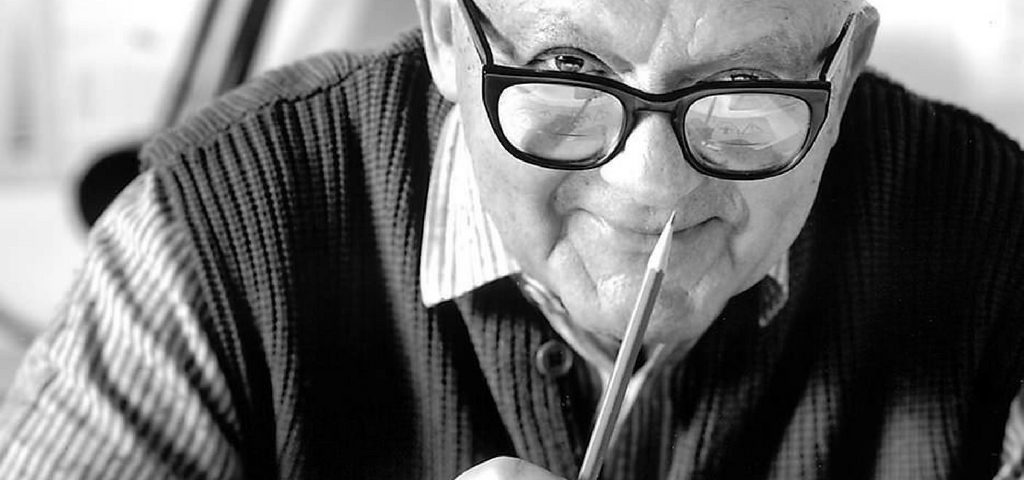Paul Rand, a life dedicated to Design

How to study online effectively
April 5, 2018
Top 7 e-learning trends
April 10, 2018
A graphic designer doesn’t just design; he communicates with the people through the design and makes his thinking recognizable. One of the most renowned personalities who fit in this statement is none other than ‘Paul Rand’.
Widely known for his famous logos, Paul Rand has made his remarkable identity in corporate logo designing.
Born on August 15, 1914, as ‘Peretz Rosenbaum’ and died in 1996 due to cancer, Paul Rand, in these 82 years of journey gave his best efforts to be one of the inspirational lives and no doubt he has inspired many.
An abundant of young designers look him as an idol in their lives, and most of his phenomenal designs are copied by others.
His academic years go by Pratt Institute (from 1929 to 1932), Parsons School of Design for one year followed by Art Students League by 1934 leading to becoming the inventor of Swiss Style of graphic design.
How his career winged
He originated his profession by joining an association to design stock images on part-time basis. Post that, he dedicated sound time to his creativity along with balancing his work and class assignments and was capable of gathering pretty good amount of design portfolio.
He then decided to disguise his identity and turned his name as ‘Paul Rand’ by shortening his first name and took ‘Rand’ from his uncle to make it a Madison Avenue friendly surname.
Moving at a great pace towards his profession, Rand starts getting praise internationally in his early twenties.
This commendation was particularly for his Direction Magazine cover designs which Rand used to create for no fee, and in no time, his eminence extended so rapidly making him one of the famous designers of his time.
Although he gained popularity for famous logos in corporate industries, including IBM, ABC, Cummins Engine, Westinghouse or UPS logos, he was once accused of being “reactionary and hostile to new ideas about design”.
Nevertheless, he continued and followed the ‘defamiliarizing the ordinary’ concept that made him building his corporate identity and making acquainted with his famous logos that are still in use!




